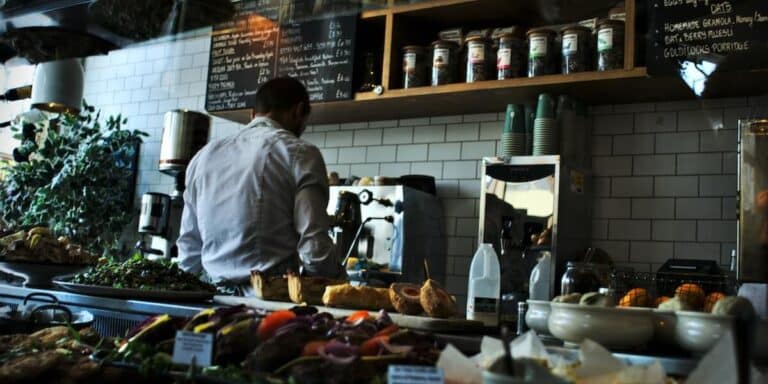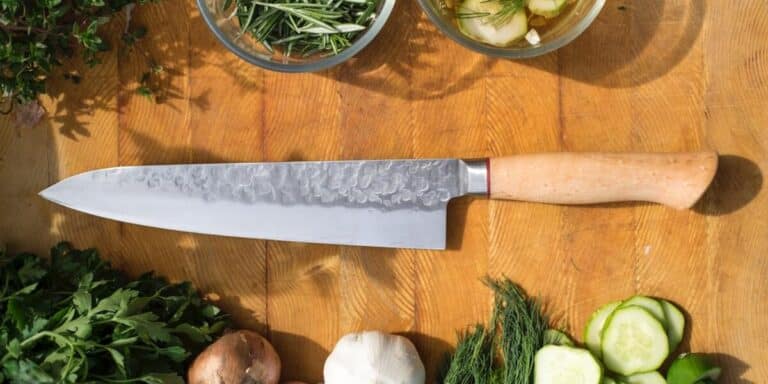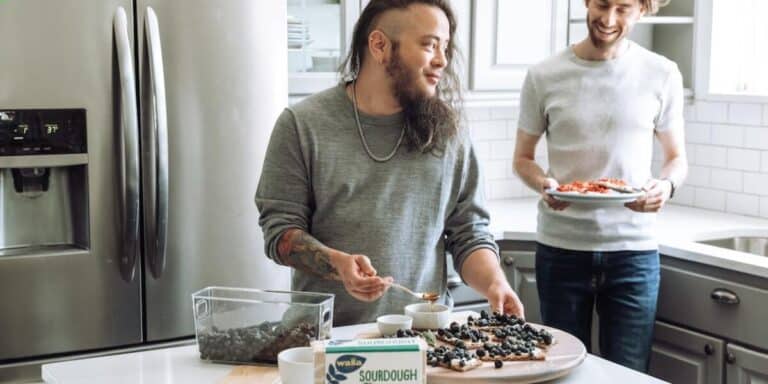Slow Cooked Beef Ribs Recipe
You’re about to reveal the secrets to tender and juicy slow-cooked beef ribs. By selecting the right cuts and applying a few simple techniques, you’ll elevate this comfort food classic to new heights. A good slow-cooked beef ribs recipe starts with a solid foundation: choosing the right ribs. You’ll want to opt for meaty, tender cuts from the chuck or short rib sections. But before you can start cooking, there’s one vital step you need to take – and it’s a game-changer for achieving those fall-off-the-bone results.
Key Takeaways
- Choose meaty, tender cuts from the chuck or short rib sections for optimal flavor and texture.
- Remove the papery membrane from the bone side of the ribs to promote even seasoning penetration.
- Slow cook the ribs in a moist environment to break down connective tissue and achieve tender, juicy results.
- Season ribs liberally with a dry rub containing brown sugar, smoked paprika, garlic powder, salt, and black pepper.
- Brush the slow-cooked ribs with a homemade BBQ sauce during the last 10-15 minutes of cooking for added flavor.
Choosing the Right Beef Ribs
When you’re selecting beef ribs, you’ll want to opt for a meaty, tender cut, typically found in the chuck or short rib sections. You’re looking for ribs with a good balance of fat and lean meat, as this will make them tender and flavorful. Avoid ribs that are too lean, as they can be tough and dry.
You’ll also want to choose ribs that are well-marbled, meaning they have a good amount of fat dispersed throughout the meat. This will not only make the ribs more tender, but it will also add flavor to the dish. Look for ribs with a good layer of fat on the surface, as this will help to keep the meat moist and juicy.
Another thing to take into account when selecting beef ribs is the size and shape of the rack. You’ll want to choose a rack that is fairly uniform in size, so that the ribs cook evenly. A rack with 4-6 ribs is a good size, as this will allow for even cooking and make it easier to handle the ribs. By choosing the right cut of beef ribs, you’ll be well on your way to creating a delicious and tender dish that will fall off the bone.
Preparing the Ribs for Cooking
You’ve chosen the perfect beef ribs, and now it’s time to get them ready for cooking. To guarantee tender, fall-off-the-bone results, you’ll need to do some prep work, starting with removing the membrane and trimming excess fat. By taking these simple steps, you’ll set yourself up for a truly mouthwatering beef ribs dish.
Removing the Membrane
To prepare your beef ribs for cooking, peel off the papery membrane that covers the bone side of most of the ribs, as this will help tenderize them and allow flavors to penetrate more easily. You’ll find that removing the membrane makes a huge difference in the end result of your dish. So, take a few minutes to do this step carefully.
To remove the membrane, you’ll need to flip the ribs over so that the bone side is facing up. Then, locate one end of the membrane and start to peel it back slowly. You may need to use a bit of force to get it started, but be gentle so you don’t tear the meat.
Here’s what you should keep in mind when removing the membrane:
- Be gentle: You don’t want to tear the meat while removing the membrane.
- Use a dry surface: This will help you get a better grip on the membrane.
- Start at one end: Peeling from one end is easier than trying to peel from the middle.
- Use a paper towel for grip: If the membrane is slippery, try using a paper towel to help grasp it.
Trimming Excess Fat
Removing excess fat from your beef ribs is crucial, as it’ll help the seasonings penetrate the meat more evenly and prevent flare-ups while cooking. You’ll want to trim the fat before applying your dry rub, so the spices can absorb into the meat properly.
| Ribs Portion | Excess Fat Location | Trimming Technique |
|---|---|---|
| Chuck-end | Along the curved bone edge | Hold the ribs firmly, locate the excess fat along the bone edge, and cut along this edge using kitchen shears |
| Entire Slab | Underneath the rib bones | Use a sharp boning knife, begin at one end and carefully cut away the fat, using a gentle prying action as needed |
| Chuck-end | Top surface near the edges | Hold the ribs firmly, locate the excess fat near the edges, and cut along this edge using kitchen shears |
| Entire Slab | Where rib tips connect | Hold the ribs at an angle, locate the excess fat where the tips connect, and cut carefully |
| Anywhere | Any excess fat remains | Use tweezers to grip and gently remove any remaining fat if needed |
Mixing the Dry Rub Ingredients
In preparation for seasoning the beef ribs, mix together the dry rub ingredients, including brown sugar, smoked paprika, garlic powder, salt, and black pepper, in a small bowl. You’ll want to make sure you’re using fresh ingredients, as stale spices can affect the flavor of your ribs. Take a moment to inspect your spices and replace any that are past their expiration date.
Now, let’s talk about the importance of proportions. You don’t want any one flavor to overpower the others, so make sure to mix the ingredients in the right ratios. Here’s a rough guide to get you started:
- Brown sugar: 2 tablespoons – adds a rich, caramel-like flavor
- Smoked paprika: 1 tablespoon – gives a smoky depth
- Garlic powder: 1 teaspoon – adds a savory, slightly sweet flavor
- Salt and black pepper: 1/2 teaspoon each – enhances flavor and texture
Mix the ingredients together until they’re well combined, breaking up any clumps with a spoon. You should end up with a smooth, even powder. Take a moment to smell the mixture – the aroma should be rich and inviting. If it seems off, adjust the proportions as needed. With your dry rub mixed and ready to go, you’re one step closer to creating deliciously flavorful beef ribs.
Cooking the Ribs to Perfection
Now that you’ve got your dry rub mixed, it’s time to focus on cooking the ribs to perfection. You’ll want to pay attention to tenderizing the ribs, as this is key to achieving that fall-off-the-bone texture. By following some straightforward cooking time guidelines, you’ll be able to enjoy a deliciously tender rack of beef ribs.
Tenderizing the Ribs
Your beef ribs will become tender and fall-off-the-bone delicious as you slow cook them in a moist environment, breaking down the connective tissue that makes them tough. You’ll want to create a humid microclimate that’ll make the ribs so tender they’ll be almost too easy to eat.
As you slow cook your ribs, you can take a few extra steps to encourage tenderization. Here are some ways to make sure your ribs are super tender:
- Brown the ribs: Before slow cooking, take a few minutes to sear the ribs in a skillet. This will create a flavorful crust on the outside, which will help the tenderizing process.
- Use a marinade or rub: Applying a marinade or rub to the ribs will help break down the proteins and tenderize the meat.
- Keep it moist: Make sure there’s liquid in the cooking pot at all times, as this will create a steamy environment that encourages tenderization.
- Don’t overcook: While slow cooking is key to tenderizing ribs, overcooking can make them tough and dry.
Cooking Time Guidelines
To achieve fall-off-the-bone tenderness, you’ll want to cook your beef ribs for a specific amount of time, which will vary depending on the cooking method and the size of the ribs. To guarantee the best results, you need to cook the ribs low and slow to break down the connective tissues and infuse the meat with rich flavors.
| Cooking Method | Cooking Time |
|---|---|
| Oven Braising | 2 1/2 to 3 hours |
| Slow Cooker | 8 to 10 hours |
| Grilling | 4 to 5 hours |
Guidelines to guarantee your ribs are cooked to perfection:
Creating a Delicious BBQ Sauce
One key component of a mouth-watering beef ribs recipe is a sweet and tangy BBQ sauce that you’ll make from scratch using just a few simple ingredients. You’ll be amazed at how easily it comes together, and the flavor it adds to your slow-cooked ribs is unbeatable. To start, you’ll combine ketchup, apple cider vinegar, brown sugar, and Worcestershire sauce in a small saucepan.
As you whisk these ingredients together, you’ll want to contemplate the overall flavor profile you’re aiming for. Do you like a sweeter BBQ sauce, or one that’s more tangy? You can adjust the proportions of the ingredients to suit your taste preferences. Here are a few key factors to keep in mind:
- Acidity balance: A splash of apple cider vinegar helps balance out the richness of the ribs.
- Sweetness level: Brown sugar adds a depth of flavor, but you can reduce the amount if you prefer a less sweet sauce.
- Umami flavor: Worcestershire sauce provides a savory, meaty flavor that enhances the overall taste.
- Thickening agent: A little bit of ketchup helps thicken the sauce to the perfect consistency.
Once you’ve whisked all the ingredients together, bring the mixture to a simmer over medium heat, reducing the heat to low and letting it cook for about 5 minutes. This will help thicken the sauce and meld all the flavors together.
Finishing Touches and Serving
Now that you’ve perfected your BBQ sauce, it’s time to add the final touches to your slow-cooked beef ribs and get ready to serve up a mouth-watering meal. After hours of slow cooking, your ribs should be tender and falling off the bone. Remove them from the slow cooker and brush them with your delicious homemade BBQ sauce.
To add some extra flavor and texture, consider adding some finishing touches to your ribs. You can sprinkle some chopped fresh herbs, such as parsley or thyme, over the top of the ribs. Or, add some crispy onions or crispy bacon bits for a smoky flavor.
Here are some ideas for sides and toppings to serve with your slow-cooked beef ribs:
| Side | Topping | Beverage |
|---|---|---|
| Coleslaw | Pickles | Iced Tea |
| Grilled Corn | BBQ Sauce | Lemonade |
| Baked Beans | Chopped Onions | Soft Drinks |
| Garlic Bread | Shredded Cheese | Craft Beer |
When serving your ribs, be sure to have plenty of napkins on hand as things can get messy. You can also consider serving with a side of crusty bread or over mashed potatoes to soak up all the juices. With these finishing touches and serving ideas, you’ll be sure to impress your family and friends with your slow-cooked beef ribs. So go ahead, grab a plate, and dig in!
Tips for Tender and Juicy Ribs
Achieving tender and juicy beef ribs requires attention to detail, so let’s plunge into the essential tips that’ll make your ribs fall-off-the-bone delicious every time. You’ve got to make sure you’re setting yourself up for success from the very beginning.
When selecting your beef ribs, you’re looking for meaty ribs with a lot of marbling. This will guarantee your ribs will stay juicy and tender during the cooking process. Now you’ve got your ribs, you’re going to want to make sure you’re prepping them correctly.
- Don’t skip the membrane removal: Leaving the membrane intact can make your ribs tough and chewy. By removing it, you’re allowing all the flavors to penetrate the meat and securing tender ribs.
- Don’t be shy with the seasoning: You’ve got to season those ribs liberally if you want that flavor to shine through.
- Brown those ribs: Take the time to brown your ribs before slow-cooking them. This step creates the foundation for a rich, deep flavor that’ll make your ribs irresistible.
- Don’t overcook them: Ribs can go from perfectly cooked to overcooked and dry in a matter of minutes. Make sure you’re checking them frequently during that last 30 minutes of cooking.
Frequently Asked Questions
Can Slow-Cooked Beef Ribs Be Cooked in a Pressure Cooker?
"A million times yes, you can cook slow-cooked beef ribs in a pressure cooker! You’ll cut the cooking time drastically, but don’t sacrifice tenderness. Brown the ribs, add your fave sauce, and cook for 30-40 minutes."
How Long Can Slow-Cooked Beef Ribs Be Stored in the Refrigerator?
You’re probably wondering how long those tender, fall-off-the-bone ribs will last in the fridge. Generally, cooked beef ribs can be safely stored in the refrigerator for 3 to 5 days, so you’ve got some time!
Can Slow-Cooked Beef Ribs Be Reheated in the Microwave?
"Don’t worry, you won’t sacrifice flavor for convenience! You can reheat slow-cooked beef ribs in the microwave, but make sure to cover them with a microwave-safe lid or plastic wrap to retain moisture and heat evenly."
Are Slow-Cooked Beef Ribs Suitable for a Low-Carb Diet?
You’re wondering if they’re suitable for a low-carb diet? You’ll be happy to know that beef ribs are actually a great option, as they’re low in carbs and high in protein and fat, making them a great fit.
Can Slow-Cooked Beef Ribs Be Frozen for Later Consumption?
You’re wondering if you can freeze them for later, right? Yes, you can! You’ll want to let them cool completely, then seal them tightly in airtight containers or freezer bags, and label them for future meals.





